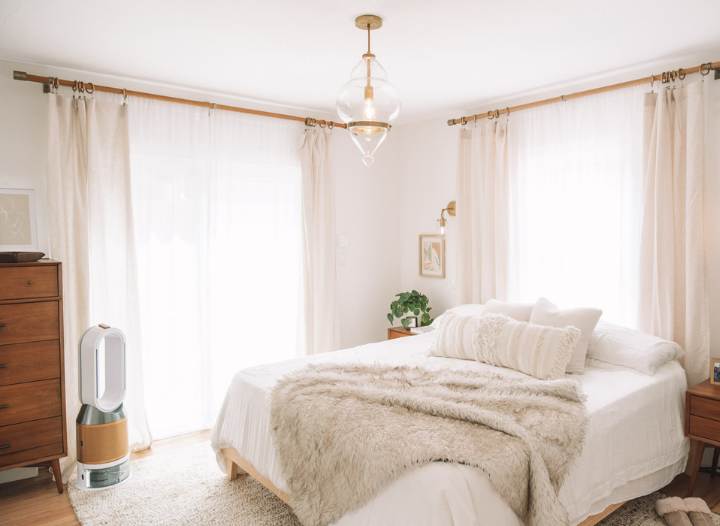Modes of transport always dictate the shape of the human landscape. When travel took to the rails in the 19th century, vast palaces of railway stations were built all over Europe. And now, on a train journey to Spain, I am passing through some of the best examples: in Paris, Barcelona and Madrid. In the latter, I have time to leave my bags at Chamartín station, actually a modern terminal, and dash off to see the Goya frescoes at the church of St Anthony, then nip back for the Renfe service to Ourense in Galicia.
My week-long hike is in a little-known part of Galicia close to the northern border of Portugal called the Ribeira Sacra, a region cut by deep river gorges. I arrive with my sister Jo after dark in the city of Ourense and take a taxi from the station up into the mountains. Our plan is to walk back to Ourense over the next five days. The taxi winds up the mountain, the headlights strafing deep forest and few houses. “It is very wild up here,” says the driver, “I’ve seen wolves on this road at night.”
We sleep in a room above the bar in the village of Parada de Sil and next morning begin to appreciate what is in store. The footpath skirts the rim of a deep river gorge, the early sun touching the forested crags on the far side and a few tiny terraces of vineyards. We meet no other walkers until the abandoned Santa Cristina monastery, where the path begins to meander through ancient groves of sweet chestnuts. Many of the stone-built villages look semi-abandoned.
In Castro we explore the narrow alleyways, finding strange wooden box structures perched on great legs of granite. Are they tombs? An old lady in a pink dressing gown appears, one of only five residents left. She laughs at my suggestion. “No, not tombs. They are hórreo, stores for the corn.”
“Where are all the people?”
She shrugs. “All gone. Some went to Argentina, Brazil and Venezuela. A few came back – like me. I left in the 1950s, but only as far as Madrid.”
The great exodus from Galicia and the Ribeira had started in the early 19th century, but accelerated in 1850s, driven by a series of harsh winters. By 1960 more than a million people had gone, and although the emigration then slowed, it continued into the 1990s. We find farmhouses, the pantile roofs and balconies sagging and collapsing, and inside a dusty coat on a nail, a tin plate on a table, a wardrobe door open. It’s as if the inhabitants just stood up, mid-dinner, and decided to run towards hope and opportunity – Venezuela must have looked like a better option at the time.
The old lady confirms that wolves have returned, hunting the herds of deer that now wander the abandoned groves of sweet chestnut. “Some of the trees are over 1,000 years old.”
That night we sleep in the monastery of Santo Estevo, now a parador hotel. In the twilight bats cruise the cloisters and owls hoot, but no wolves howl. After two days we cross the River Sil at Os Peares and walk deeper into the interior. Some of the villages here are completely abandoned, others cling on with one last resident, usually a stooping old lady in a headscarf. Stone steps lead up to once-lovely balconies now inhabited only by goats and cats.
At Turbisquedo we meet Bill, an American who came here 20 years ago with his partner, Juan Carlos, and took on the project of restoring an abandoned fortified palace-cum-farmhouse. Built on the lines of a Roman villa, with central courtyard and massively thick stone walls, they have filled it with tapestries, books and antique furniture. Bill’s tour turns into a fascinating trawl of regional history and an insight into the tumult and chaos that sent people into emigration. “It was owned by one Captain Taboada, who chose the wrong side in the Spanish civil war, the one in the 1830s. He stood up for freedom and liberty, but he was cornered here and surrendered, only to be summarily executed.”
Bill shows us through to a first-floor bedroom. “His widow decided that no one would ever capture the house again so she had the fortified tower constructed. The secret entrance is in this room.”
after newsletter promotion
Once inside the tower, the ingenuity of the builders is revealed: massive interlocking blocks of stone carefully slotted together to make the tower capable of withstanding artillery attack. “The idea was that the family could retreat here and hold out.” No assault ever did come, however. Instead, there was decline and ruin. Bill and Juan Carlos are busy now with the land, restoring ancient woodland and vineyards to production, the huge camellia trees a testament to the mild climate that first drew people here.
Next night, another treat: a stay in the Casa Rectoral vineyard at San Eusebio, then a long walk down to the River Miño and into the city of Ourense. This city, largely ignored by tourism, is a real gem. We walk across the Roman bridge, then the modernist masterpiece of the millennium bridge, a span that allows pedestrians to climb all around it on a looping ribbon of concrete.
And then we reach what must be the perfect end to a long walk – apart from a railway station, of course: a set of natural hot springs by the river. Some have been turned into swanky spa resorts, but we stick to the free public pools. I find myself lounging next to a family, the children leaping about while, like me, the adults doze. “Our grandfathers abandoned Galicia for Venezuela,” the old lady tells me. “But now we came back.”
The trip was provided by On Foot Holidays, which offers a six- or nine-night version of the Ribeira hike for £1,015 or £1,210, including breakfasts, some dinners and lunches, luggage transfers, route guidance and telephone support. Rail travel to Spain was provided by EUrail pass; a seven-days-in-a-month pass costs around £300. Accommodation was provided by Barceló Sants in Barcelona railway station (doubles from around £90) and Hotel Reina Cristina in Algeciras (doubles from £60). Further information at Spain Tourism






